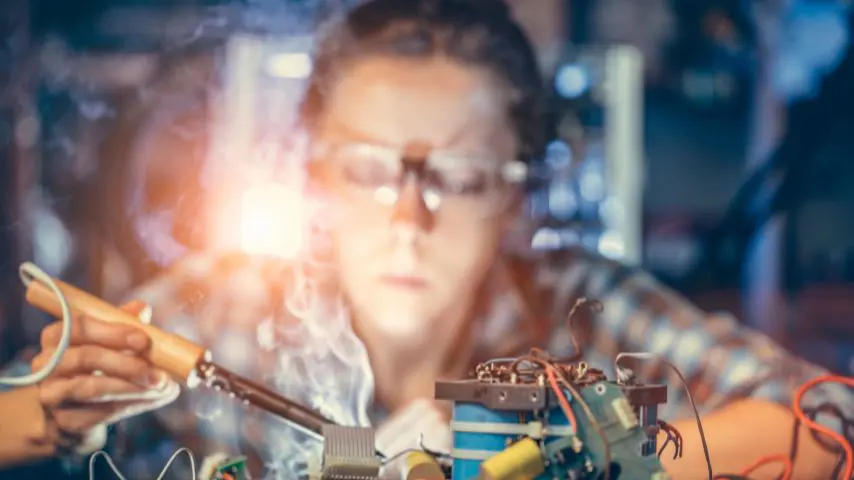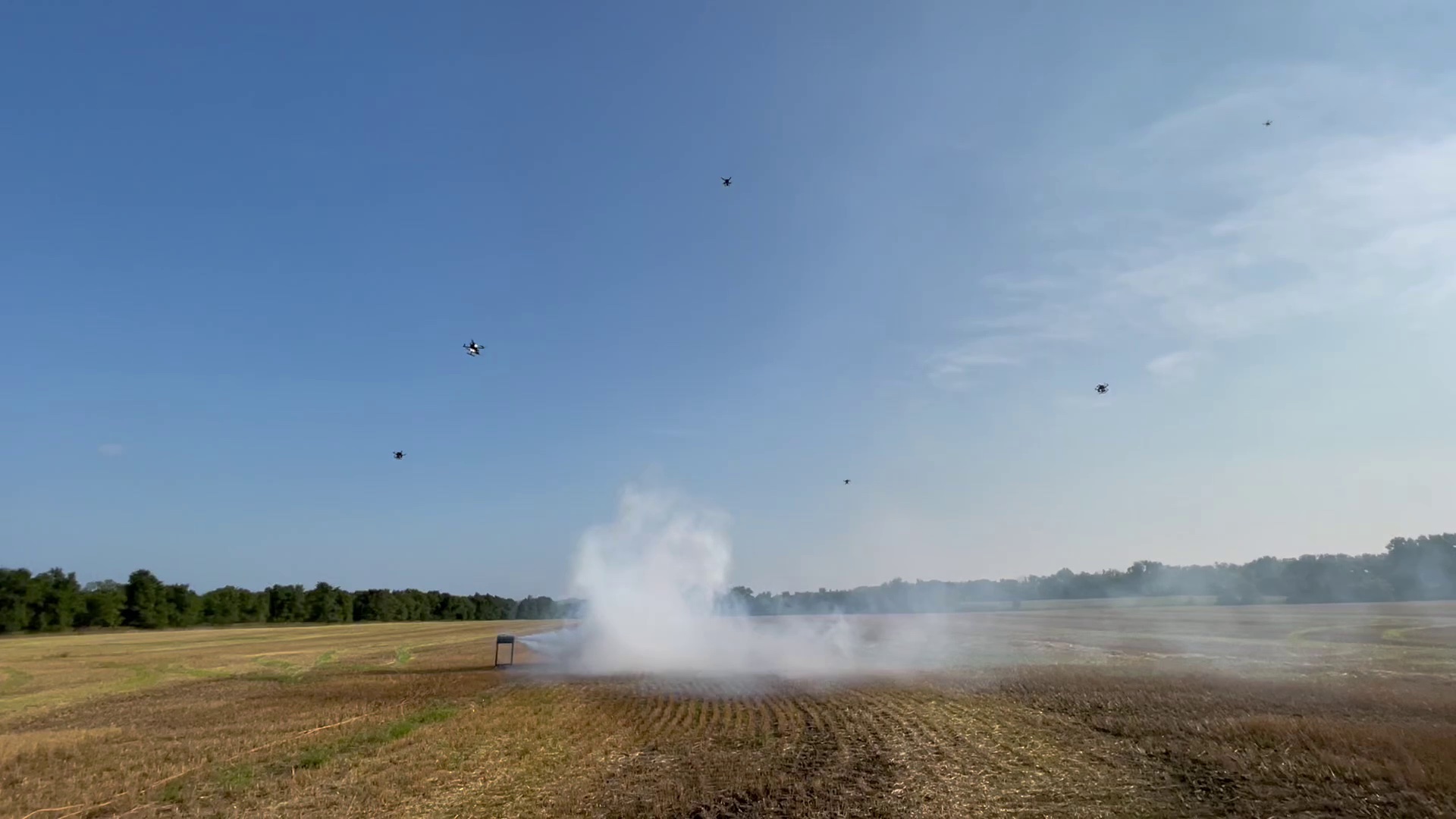Engineer Challenges Aren't All Project-Related
Engineer Challenges Aren't All Project-Related


An engineer’s job is to solve problems, but these professionals face unprecedented challenges and not all are caused by the projects they work on.
Engineers may solve problems for others, but increasingly they’re faced with unprecedented challenges of their own—from coping with the swift pace of technological change to remaining competitive in the midst of a global labor shortage.
It’s a complex situation, but strategies exist—for both companies and employees—to make the challenges more manageable.
Clients often offhand projects to StudioRed in Palo Alto, Calif., hoping the design consultancy can get a product to the market quickly because a similar one already exists.
Weston Bourgeois, a mechanical engineer at StudioRed, says clients sometimes don’t understand that researching and re-engineering those similar products doesn’t happen seemingly overnight.
“A lot of the time we’ll hear, ‘Well, Apple does it,’” he explained. “Well, Apple’s one of the biggest companies in the world and they have the money to put into that.”
That sentiment doesn’t get shared with clients in that way, obviously, but it is necessary to keep open a good line of honest communication with everyone involved in a project.
Discover the Benefits of ASME Membership
Bourgeois noted that clients need to know when a struggle begins to arise. “It’s a bad scenario when someone doesn’t keep clients or partners in the loop,” he explained. “Then there’s this big crisis, and now they’re freaking out trying to figure out how to solve it. If you communicate early on, they’re more aware and willing to help find the solution.”
Keeping up with evolving technology can feel arduous. There are different skills to learn, new security risks and ethical concerns to contend with, and likely a shift in the way you’ve been accustomed to doing things.
Given that “continuous learning is an unspoken job requirement in our industry,” looking on the bright side when it comes to “what efficiencies new technology will bring” is where the focus should be, explained Emily A. Ormsby, an associate mechanical engineer at Stantec based in Rochester, N.Y.
“It's also powerful to recognize what time may be unlocked for more design creativity as we implement tools to streamline our processes,” she added.
Now that hybrid work environments are so common, it's more important than ever to set aside time for leaders to provide structured mentorship and paid professional development programs, according to Ormsby.
Because new hires look for these offerings, employers need to provide them to stay competitive, she said. She added, “Intentional action is required rather than relying on spontaneous exposure.”
At StudioRed, employee performance reviews include assessing attributes such as adaptability, teamwork, and emotional intelligence.
Managing client expectations is essential, for example, and this is where adaptability comes into play. Client expectations can vary widely, as Bourgeois knows well. His work spans from large, public companies to business owners “working out of their garage,” exposing him to “people from every walk of life.”
To address the increased number of clients seeking designs that reduce carbon emissions, Stantec developed an in-house Carbon Impact Team. Its employees often seek project work that prioritizes sustainability, although it can be challenging to balance what clients want and what their budgets allow.
“We are well-equipped to design sustainable solutions, but not every project has the financial backing to meet the requirements necessary to fully realize sustainability goals,” Ormsby said. “We do our best to optimize our designs within our client’s constraints.”
If possible, companies should try to spread the workload evenly among their engineers—and in every case, make the workload reasonable.
“Project profits are a benefit to taking on more work, but if staff retention is poor, we may also wind up spending more time and money replacing staff and training new employees,” Ormsby said. “Many employees no longer just desire work-life balance, but have come to expect it, and will not tolerate a long-term situation where balance isn't achievable.”
Bourgeois has learned to give himself permission “not to say yes to everything people request of me.” He is upfront with clients about not being able to take a call when he’s super busy but makes sure to tell them the soonest time he will be available.
You don’t need to be burned out to require some down time—even for a brief respite with colleagues during work hours.
Bourgeois recommended cracking jokes, catching up on each other’s personal lives, and talking about current events and other topics that have nothing to do with the projects on each others’ plates.
“Then you come back and have a fresh set of ideas after taking a half hour or 45 minutes away from crunching on a problem,” he said.
Robin L. Flanigan is an independent writer in Rochester, N.Y.
It’s a complex situation, but strategies exist—for both companies and employees—to make the challenges more manageable.
Be clear with clients
Clients often offhand projects to StudioRed in Palo Alto, Calif., hoping the design consultancy can get a product to the market quickly because a similar one already exists.
Weston Bourgeois, a mechanical engineer at StudioRed, says clients sometimes don’t understand that researching and re-engineering those similar products doesn’t happen seemingly overnight.
“A lot of the time we’ll hear, ‘Well, Apple does it,’” he explained. “Well, Apple’s one of the biggest companies in the world and they have the money to put into that.”
That sentiment doesn’t get shared with clients in that way, obviously, but it is necessary to keep open a good line of honest communication with everyone involved in a project.
Discover the Benefits of ASME Membership
Bourgeois noted that clients need to know when a struggle begins to arise. “It’s a bad scenario when someone doesn’t keep clients or partners in the loop,” he explained. “Then there’s this big crisis, and now they’re freaking out trying to figure out how to solve it. If you communicate early on, they’re more aware and willing to help find the solution.”
Positive attitude
Keeping up with evolving technology can feel arduous. There are different skills to learn, new security risks and ethical concerns to contend with, and likely a shift in the way you’ve been accustomed to doing things.
Given that “continuous learning is an unspoken job requirement in our industry,” looking on the bright side when it comes to “what efficiencies new technology will bring” is where the focus should be, explained Emily A. Ormsby, an associate mechanical engineer at Stantec based in Rochester, N.Y.
“It's also powerful to recognize what time may be unlocked for more design creativity as we implement tools to streamline our processes,” she added.
Seize opportunities
Now that hybrid work environments are so common, it's more important than ever to set aside time for leaders to provide structured mentorship and paid professional development programs, according to Ormsby.
Because new hires look for these offerings, employers need to provide them to stay competitive, she said. She added, “Intentional action is required rather than relying on spontaneous exposure.”
Improve soft skills
At StudioRed, employee performance reviews include assessing attributes such as adaptability, teamwork, and emotional intelligence.
Managing client expectations is essential, for example, and this is where adaptability comes into play. Client expectations can vary widely, as Bourgeois knows well. His work spans from large, public companies to business owners “working out of their garage,” exposing him to “people from every walk of life.”
Global concerns
To address the increased number of clients seeking designs that reduce carbon emissions, Stantec developed an in-house Carbon Impact Team. Its employees often seek project work that prioritizes sustainability, although it can be challenging to balance what clients want and what their budgets allow.
“We are well-equipped to design sustainable solutions, but not every project has the financial backing to meet the requirements necessary to fully realize sustainability goals,” Ormsby said. “We do our best to optimize our designs within our client’s constraints.”
Prevent burnout
If possible, companies should try to spread the workload evenly among their engineers—and in every case, make the workload reasonable.
“Project profits are a benefit to taking on more work, but if staff retention is poor, we may also wind up spending more time and money replacing staff and training new employees,” Ormsby said. “Many employees no longer just desire work-life balance, but have come to expect it, and will not tolerate a long-term situation where balance isn't achievable.”
Bourgeois has learned to give himself permission “not to say yes to everything people request of me.” He is upfront with clients about not being able to take a call when he’s super busy but makes sure to tell them the soonest time he will be available.
Take a break
You don’t need to be burned out to require some down time—even for a brief respite with colleagues during work hours.
Bourgeois recommended cracking jokes, catching up on each other’s personal lives, and talking about current events and other topics that have nothing to do with the projects on each others’ plates.
“Then you come back and have a fresh set of ideas after taking a half hour or 45 minutes away from crunching on a problem,” he said.
Robin L. Flanigan is an independent writer in Rochester, N.Y.



.jpg?width=850&height=478&ext=.jpg)

